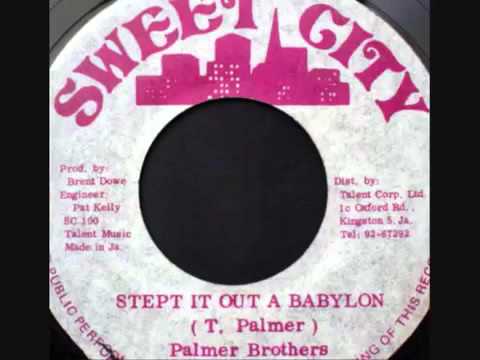Palmer Brothers – Step It Out A Babylon
Dub music is characterized by a “version” or “double”[16] of an existing song, often instrumental, using B-sides of 45 RPM records and typically emphasizing the drums and bass for a sound popular in local sound systems. A “version” is a record with the vocals removed, the alternative cut of a song made for the DJ to toast over. These “versions” were used as the basis of a new songs by rerecording them with new elements. The instrumental tracks are typically drenched in sound effects such as echo, reverberation, with instruments and vocals dropping in and out of the mix. Another hallmark of the dub sound is the prominent use of bass guitar. The music sometimes features other noises, such as birds singing, thunder and lightning, water flowing, and producers shouting instructions at the musicians. It can be further augmented by live DJs. The many-layered sounds with varying echoes and volumes are often said to create soundscapes, or sound sculptures, drawing attention to the shape and depth of the space between sounds as well as to the sounds themselves. There is usually a distinctly organic feel to the music, even though the effects are electronically created.
Often these tracks are used for “toasters” rapping heavily rhymed and alliterative lyrics. These are called “DJ Versions”. In forms of sound system based reggae, the performer using a microphone is referred to as the “DJ” or “deejay” (where in other genres, this performer might be termed the “MC”, meaning “Master of Ceremonies”, or alternately, the later developed slang terms: “Microphone Commander” or “Mic Control”), and the person choosing the music and operating the turntables is called the “selector” (sometimes referred to as the DJ in other genres).
A major reason for producing multiple versions was economic; a record producer could use a recording he owned to produce numerous versions from a single studio session. A version was also an opportunity for a producer or remix engineer to experiment and express their more creative side. The version was typically the B-side of a single, and used for experimenting and providing something for DJs to talk over, while the A-side was more often dedicated to the original vocal-oriented track. In the 1970s, LP albums of dub tracks were produced, often simply the dub version of an existing vocal LP, but sometimes a selection of original instrumental tracks produced in dub style for which no vocals existed.





